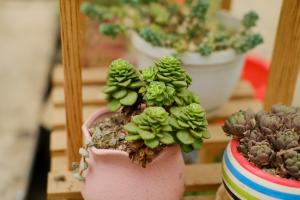Will my newly planted tree is losing leaves
Planting a new tree is always an exciting event for any gardener or homeowner. However, it can be frustrating when the tree starts losing leaves soon after planting. It's essential to understand the reasons behind this to effectively deal with the issue.
Causes of leaf loss in newly planted trees:
The most common cause of leaf loss in newly planted trees is shock. When trees are dug up from their original location and replanted elsewhere, they may experience transplant shock. This shock can cause the tree to lose leaves as it tries to establish roots in the new location. It's crucial to ensure your tree is well-watered and receives adequate sunlight to help it acclimate to the new environment.
Another factor contributing to leaf loss in newly planted trees is insect infestation. Boring insects such as moths, weevils, and beetles can damage the tree's leaves, causing them to wilt and fall off. It's advisable to use insecticides to eliminate any infestation before planting the tree to avoid severe damage.
Finally, nutrient deficiency can cause leaf loss in newly planted trees. Trees require essential minerals such as nitrogen, phosphorus, and potassium to grow healthy and strong leaves. If the soil lacks these nutrients, the tree may shed its leaves to conserve energy. Adding fertilizer can help provide the necessary nutrients to ensure the tree has everything it needs to thrive.
How to address leaf loss in newly planted trees:
Watering is essential in preventing leaf loss in newly planted trees. Soil should be kept consistently moist but not waterlogged. This can be achieved through regular watering or installing an irrigation system. It's advisable to water the tree deeply once a week rather than shallow watering frequently.
Careful monitoring of your tree's environment can help in early detection of insect infestation. Look out for wilted, curled, or discolored leaves, which may indicate an infestation. Treatment with insecticides is recommended when signs of infestation are detected to avoid severe damage to the tree.
Fertilizer application can help provide essential nutrients to trees, preventing nutrient defecancies due to soil quality. It's advisable to conduct a soil test to determine which nutrients may be lacking and provide the necessary fertilizer in the recommended amounts.
Conclusion:
Leaf loss in newly planted trees is common and may be caused by several factors, including transplant shock, insect infestation, and nutrient deficiency. Proper care and attention, including regular watering, early detection of insect infestation, and fertilizer application can help address this issue effectively. With careful and consistent care, your newly planted tree will soon grow to create a beautiful and thriving landscape.

 how many times do yo...
how many times do yo... how many planted tre...
how many planted tre... how many pine trees ...
how many pine trees ... how many pecan trees...
how many pecan trees... how many plants comp...
how many plants comp... how many plants can ...
how many plants can ... how many plants and ...
how many plants and ... how many pepper plan...
how many pepper plan...































